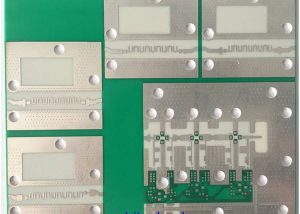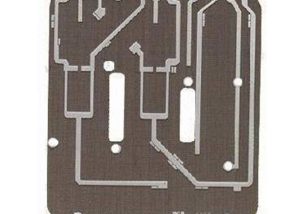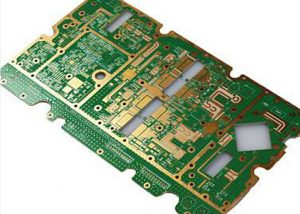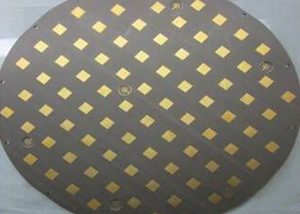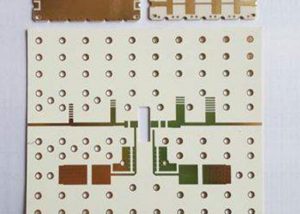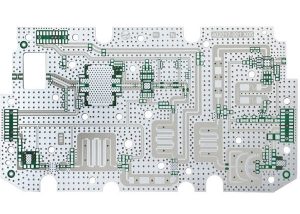High Frequency PCB
Hitech is a professional high frequency pcb board manufacturer in China, our high frequency PCBs (RF PCB) are widely used in wireless networks, wireless communications and satellite communications, in particular the popularity of 4G,5G networks exacerbate the market demand for the product on the RF PCB. For some special high-frequency PCB materials ( such as: Teflon PCB material, Rogers PCB materials were ), we have sufficient inventory. If you are looking for high frequency pcb manufacturer in China, please contact [email protected] , we won’t let you down.
What is a high frequency PCB board
High frequency PCB boards are special circuit boards with higher electromagnetic frequencies. Generally speaking, high-frequency can be defined as frequencies above 1GHz. Its various physical properties, accuracy, and technical parameters require very high requirements, and are often used in automotive anti-collision systems, satellite systems, radio systems and other fields.
With the rapid development of science and technology, more and more equipment designs are applied in the microwave frequency band (>1GHZ) and even in the millimeter wave field (30GHZ), which also means that the frequency is getting higher and higher, and the requirements for the circuit board are getting higher and higher. For example, the substrate material needs to have excellent electrical properties, good chemical stability, and the loss on the substrate with the increase of the power signal frequency is very small, so the importance of the high-frequency PCB board is highlighted.
High frequency PCB board production process
NPTH PTFE board processing flow
Cutting-drilling-dry film-inspection-etching-erosion inspection-solder mask-characters printing-spray tin-forming-testing-final inspection-packaging-shipment
PTH PTFE board processing flow
Cutting-drilling-hole treatment (plasma treatment or sodium naphthalene activation treatment)-copper immersion-board electricity-dry film-inspection-diagram electricity-etching-corrosion inspection-solder mask-character printing-spray tin-forming-test-final Inspection-packaging-shipment
General specification for high frequency pcb (Rogers PCB, Teflon PCB, RF PCB)
Layer count: 1-6
Board thickness: 0.2-5.0mm
Copper thickness: 0.5-3 oz
Dielectric Constant(DK): 2.2-10.3
Min trace width/spacing: 4/4mil
Min drill hole size: 0.15mm
Surface treatment: HASL, HASL Lead free, Immersion Gold/Tin/Silver, OSP, etc.
Material available: Teflon pcb material, Rogers pcb material, Taconic pcb material, Arlon pcb material, etc.
Advantages of high frequency PCB board
1. High efficiency
High-frequency PCB boards with small dielectric constants will have very low losses, and advanced induction heating technology can achieve the target heating requirements with very high efficiency. Of course, while focusing on efficiency, it also has the characteristics of environmental protection, which is very suitable for the development direction of today’s society.
2. Fast transmission speed
The transmission speed is inversely proportional to the square root of the dielectric constant, which means that the smaller the dielectric constant, the faster the transmission speed. This is the advantage of the high-frequency printed circuit board. It uses special materials, which not only guarantees the low dielectric constant, but also maintains the stable operation, which is very important for signal transmission.
3. Large degree of controllability
High frequency PCB board is widely used in various industries that require precision metal material heating treatment. In the process of its field, not only can heating of different depth components, but also focus on heating according to local characteristics, whether it is surface or deep level; centralized or decentralized heating methods can be easily completed.
4. Strong tolerance
Dielectric constant and medium have certain requirements on the environment, especially in the south, where wet weather will seriously affect the use of circuit boards. High-frequency circuit boards made of materials with extremely low water absorption can challenge such an environment. At the same time, they also have the advantages of resistance to chemical corrosion, moisture, high temperature, and great peel strength, allowing high-frequency circuit boards to exert powerful performance .
Applications of high frequency PCB board
- Mobile communication products.
- Power amplifier, low noise amplifier, etc.
- Passive components such as power splitters, couplers, duplexers, filters, etc.
- Automobile anti-collision systems, satellite systems, radio systems and other fields.
Why lots of industry Choose Rogers PCB
Rogers PCBs can be trusted as there are lesser products to serve at its level in conventional PCBs.
It is also reliable in terms of their service criteria because they offer samples so that anyone can understand the effectiveness and efficiency before finalizing.
This puts ease among the customers to choose Rogers PCB.
The moisture absorption feature is not served by the ordinary PCBs which is also a reason for Rogers PCBs increasing popularity.
These characteristics are appropriate for being used in every kind of environment and weather conditions by ensuring lesser chances of malfunctions.
In addition, Rogers PCB is resistant to several types of chemicals so that it can be used in almost all the industries without any pressure.
FAQs about High-Frequency PCBs
1. Can High-Frequency PCBs be customized for specific applications?
Absolutely! High-Frequency PCBs can be customized in terms of layout, material choice, and specifications to meet the unique requirements of different applications. Whether you need a board for a satellite communication system or a medical imaging device, customization ensures that your PCB will deliver optimal performance.
2. How do High-Frequency PCBs compare to standard PCBs?
High-Frequency PCBs are specifically engineered for high-speed applications, where they outperform standard PCBs by ensuring higher signal integrity and reduced electromagnetic interference. This makes them indispensable in advanced electronic systems where performance and reliability at high frequencies are critical.
3. How are High-Frequency PCBs tested for quality?
High-Frequency PCBs undergo rigorous testing, including signal integrity analysis, thermal cycling, and electromagnetic compatibility (EMC) testing. These tests ensure that the PCBs meet the highest standards of quality and performance before they are deployed in critical applications.
4. What design considerations are important for High-Frequency PCBs?
Key considerations include selecting the appropriate substrate material, designing for minimal electromagnetic interference, optimizing the layout for signal integrity, and ensuring thermal management. Attention to these details is crucial for maximizing the performance of high-frequency applications.
5. Where can I get High-Frequency PCBs manufactured?
You can get High-Frequency PCBs manufactured at specialized companies like HiTech Circuits, which offer extensive experience and expertise in producing high-quality, high-performance PCBs tailored to your specific needs.

